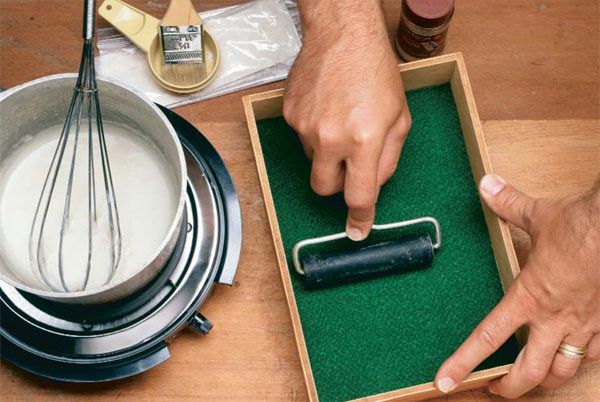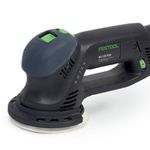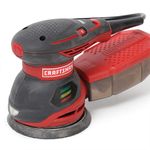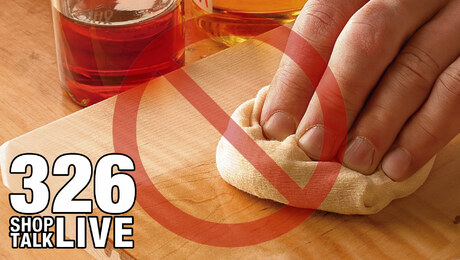
Synopsis: One adhesive that gets scant attention in woodworking circles is flour-based paste. In this short article, Keith Davis says offers a recipe for it and explains how to cook and smooth it. There are tips on applying it and rubbing it down. His tools are simple, too: brushes, rollers, old credit cards.
Adhesives lining woodshop shelves range from traditional animal-hide glue to modern epoxies. But there’s one adhesive that gets scant attention: flour-based paste, a material that has bound books for centuries and will adhere leather and felt to fine furniture.
Paste can be just a blend of white flour and water. But if you combine flour, alum and water (see the photo above) and cook it, you’ll get a paste that has several unique characteristics:
- It is reversible and removable.
- It sets up and dries slowly, so you have plenty of working time.
- It soaks into many materials, softening and filling pores.
- It contains no hazardous solvents and is nontoxic.
Paste won’t edge-glue boards, but it has no equal for sticking labels on wooden storage boxes, lining drawers with paper, covering the interior of a jewelry chest with felt or adding a leather surface to a writing desk.
Basic cooked paste
Ask 10 paste users how to make paste, and you’ll likely get as many answers. Some add sugar to the mixture, so it will keep for several weeks in the refrigerator. Wallpaper can be hung with a simple wheat paste that’s made cold. Other recipes call for rice flour, which makes a light-colored paste. And laundry starch can make an especially tough paste. I usually use the basic cooked-paste recipe shown in the box at right.
Tips for smooth paste
Materials stretch with paste, which can be a curse and a blessing. Papers stretched when still wet with paste often will shrink and buckle when they dry. But stretching can be helpful when you want paper to conform to contours and leather to be formed into irregular shapes.
To apply paste, I use an inexpensive bristle brush with the bristles cut off about half length. Use single, one-way strokes of the brush to minimize stretching. If you’re gluing porous materials like leather, coat both surfaces, and leave them wet-side up for several minutes. Wipe off any excess globs, and apply a thin second coat of paste. Again, wait a few minutes. Paste the two materials together, pressing down evenly. Extremely thin leathers or pigskin may weep paste when pressed down. Wipe off any squeeze-out with a dampened cloth or paper towel.
From Fine Woodworking #116
For the full article, download the PDF below:
Fine Woodworking Recommended Products


Festool Rotex FEQ-Plus Random Orbital Sander

Craftsman Random Orbit Sander




















Log in or create an account to post a comment.
Sign up Log in